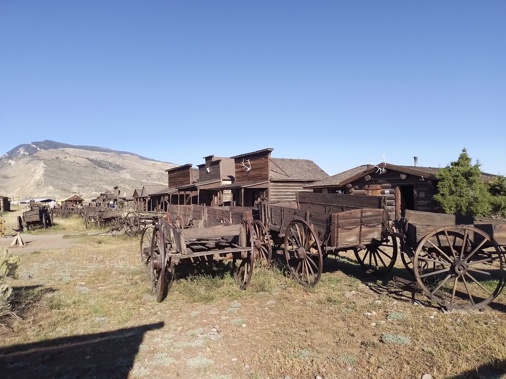
After feasting on nature’s splendour in Yellowstone National Park, I was itching for a dabble with the Old West’s frontier spirit. Take the East Yellowstone route to Cody, on US Highway 14-16-20, dubbed the Buffalo Bill Cody Scenic Byway. After crossing the sigh-inducing Sylvan Pass, which tops out at 2600 metres above sea level, the route traces the north fork of the Shoshone River through the bucolic brilliance of the East Yellowstone Valley, which is also known as the Wapiti Valley. The rolling medley of epic mountain vistas and jagged rock formations serve up a riveting scenic drive. The area boasts a dozen beautiful, historic lodges that were established a century ago as “dude ranches,” designed to keep the outdoorsy spirit of the West alive for city-slickers. On the approach to Cody, stop by the Buffalo Bill Dam. When it was completed in 1910, it was the tallest concrete arch dam in the world.
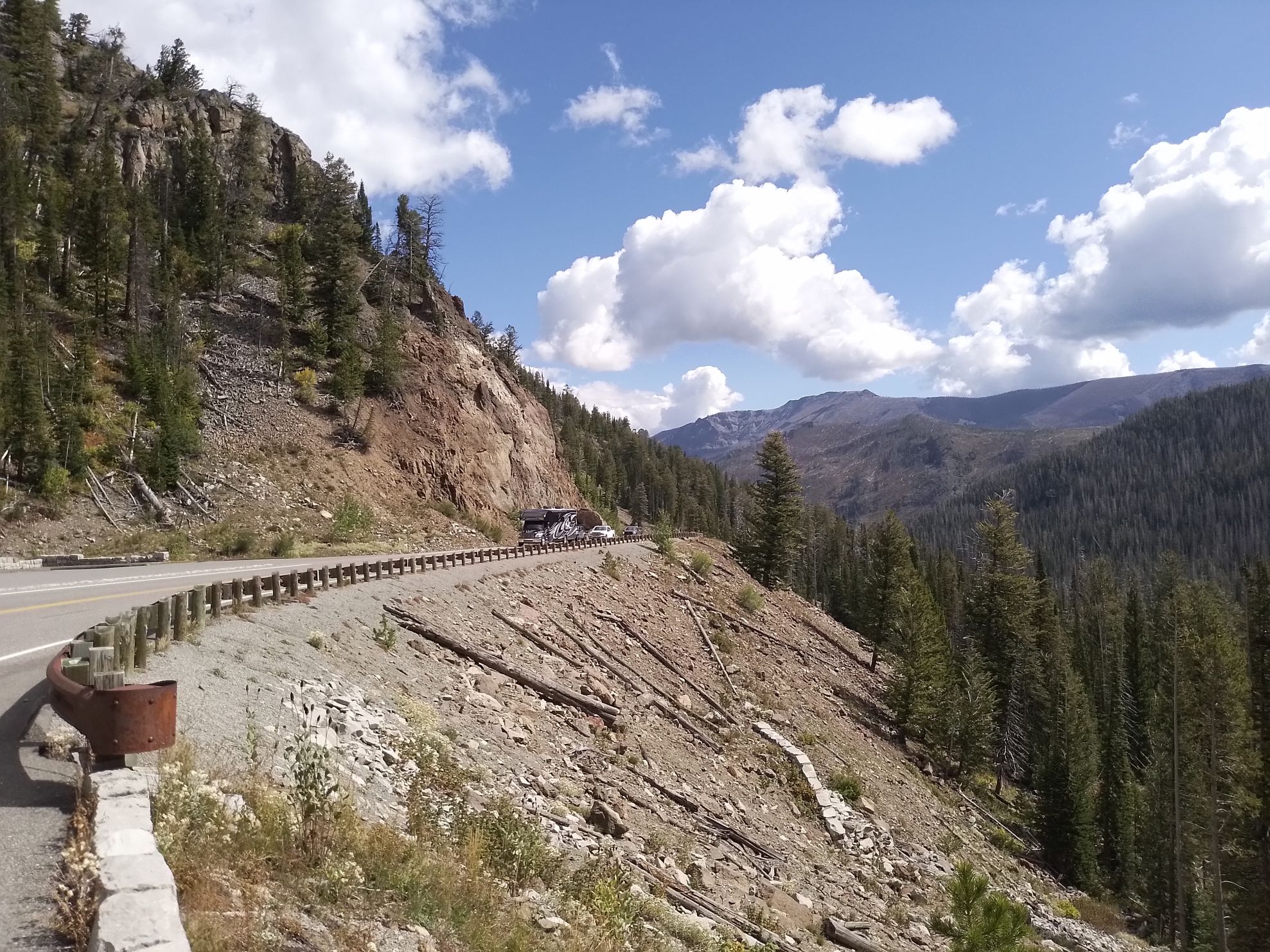 Sylvan Pass, East Yellowstone. Photo / Mike Yardley
Sylvan Pass, East Yellowstone. Photo / Mike Yardley
The charismatic frontier town of Cody was founded by the legendary showman Buffalo Bill Cody in the late nineteenth century and it’s remained true to the buckaroo spirit of the Old West. Cody proudly touts itself as the “Rodeo Capital of the World,” and its colourful downtown brims with cowboy apparel stores, cheap and cheerful steakhouses and effervescent, boot-tapping saloons. I adored Cody and it’s infectious, welcoming ambience. Those apparel stores are strangely intoxicating, stacked to the ceiling with hats, boots, belts and buckles. For 85 years, the Cody Night Rodeo has been staged in Stampede Park overlooking the Wyoming Plains. Held nightly across the summer months, it features plenty of bucking broncos, rodeo clowns, cowboys with lassos and expert horse riders.
Nearby, Old Trail Town delivers an indelible sense of what an old Western town really looked and felt like. (Stick to the walking tracks to avoid stepping on a rattler!) This living museum comprises a collection of 26 historic frontier buildings from the late nineteenth century that were salvaged and moved here from towns across Wyoming and Montana. You can meander through homely trapper cabins and atmospheric saloons, inspect several well-worn covered wagons, and even pay your respects to the early settlers at a historic cemetery. Fans of the hit movie Butch Cassidy and the Sundance Kid will be particularly enthused at the chance to wander into the original “Hole-in-the-Wall Cabin,” which Butch Cassidy and other outlaws of the Wild West used to shelter themselves from the law.
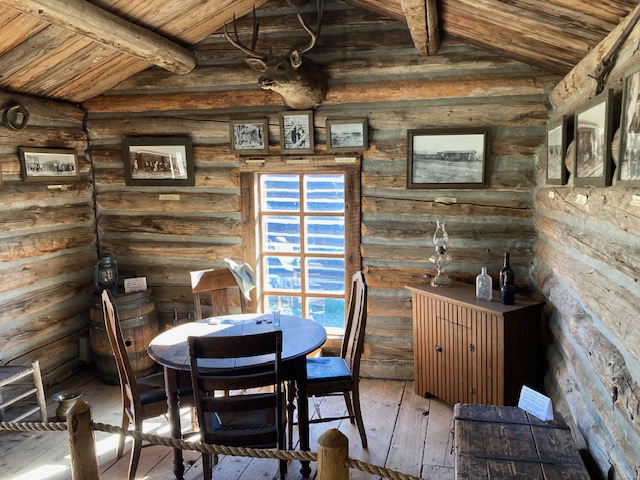
Butch Cassidy's cabin at Old Trail Town. Photo / Mike Yardley
Dubbed the “Smithsonian of the West,” Buffalo Bill Center of the West is a sprawling facility encompassing five themed galleries. You can marvel at frontier artworks at the Whitney Western Art Museum; dive into the natural history of the region; gawk at the most comprehensive collection of US firearms in the world; and treasure the cultural insights at the Plains Indians Museum. But the biggest crowd-catcher is the gallery dedicated to the town’s namesake: the Buffalo Bill Museum. No historic figure did more to popularise the American West than William Frederick “Buffalo Bill” Cody. A frontier scout and bison hunter in his youth, Buffalo Bill put together a traveling Wild West show that proved a smash hit throughout the United States and Europe for 30 years. Cody had huge respect for Native Americans and supported their civil rights. The Lakota tribe, part of the Sioux Nation, formed a huge component of the production. This museum details his extraordinary life, chock-full of interactive exhibits that pay homage to his rip-roaring stage show and enduring legacy.
120 years ago, shortly after Cody’s inception as a town, Buffalo Bill opened the landmark Irma Hotel, named after his daughter. It’s still an evocative place in town to soak up the spirit of the Old West. You’ll feel like you’ve been transported back to the turn of the last century in the main dining room, with its antique gold cash register, antler chandeliers, red-leather bar chairs and tin ceiling. The hulking cherry-wood bar along the back wall was a gift given to Buffalo Bill in 1900 from Queen Victoria, who was most amused by his Wild West shows in London. Every night between June and September, Cody Gunfighters is a cheesy shoot-out western re-enactment that bursts into life outside the hotel at 6pm. It’s free to view. Retire indoors for dinner and surrender to the all-you-can-eat prime-rib buffet, headlined by barbequed buffalo and pork ribs.
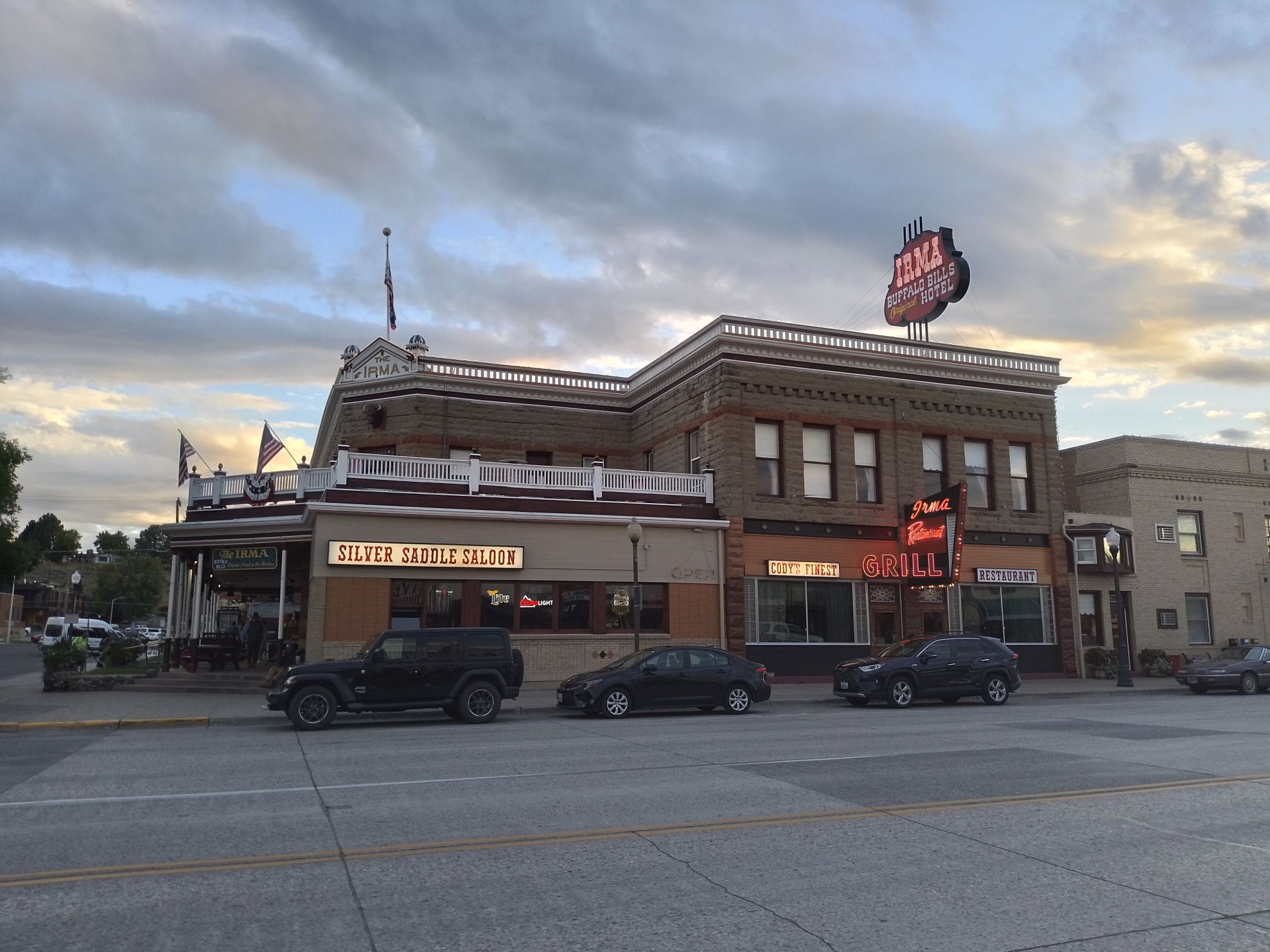 Photo / Mike Yardley
Photo / Mike Yardley
Where to stay? The Cody Hotel, right across the road from Old Trail Town, is a luxury mid-size hotel, with warm and homely hospitality and exceptional in-house amenities, including oven-fresh complimentary cookies! The woodsy, Western design aesthetic is stylishly executed, while creature comforts include on-site laundry, indoor swimming pool, jacuzzi and fitness centre. The complimentary continental breakfast is generously proportioned, while evening refreshments are available in the lobby. It’s a winning establishment.
Heading east, stitch a stop in Buffalo, Wyoming into your road-trip. Located at the foot of the Bighorn Mountains on the Bozeman Trail, cute little Buffalo exudes charm in spades, proudly home to one of the most acclaimed Old West hotels. Dating back to 1880, the Occidental Hotel was built by Charles Buell, who steadily expanded it over forty years into a grand hotel, before losing his labour of love in a high-stakes poker game. Among those who enjoyed the hospitality of the Occidental in the early days were Buffalo Bill Cody, Teddy Roosevelt, and Calamity Jane, who drove wagons on the Bozeman Trail. Butch Cassidy and the Sundance Kid rode to the Occidental from their hideout at the nearby Hole-in-the-Wall. Cowboys went miles out of their way to enjoy the many pleasures and comforts offered at the Occidental. It was the ultimate beacon of Old West hospitality.
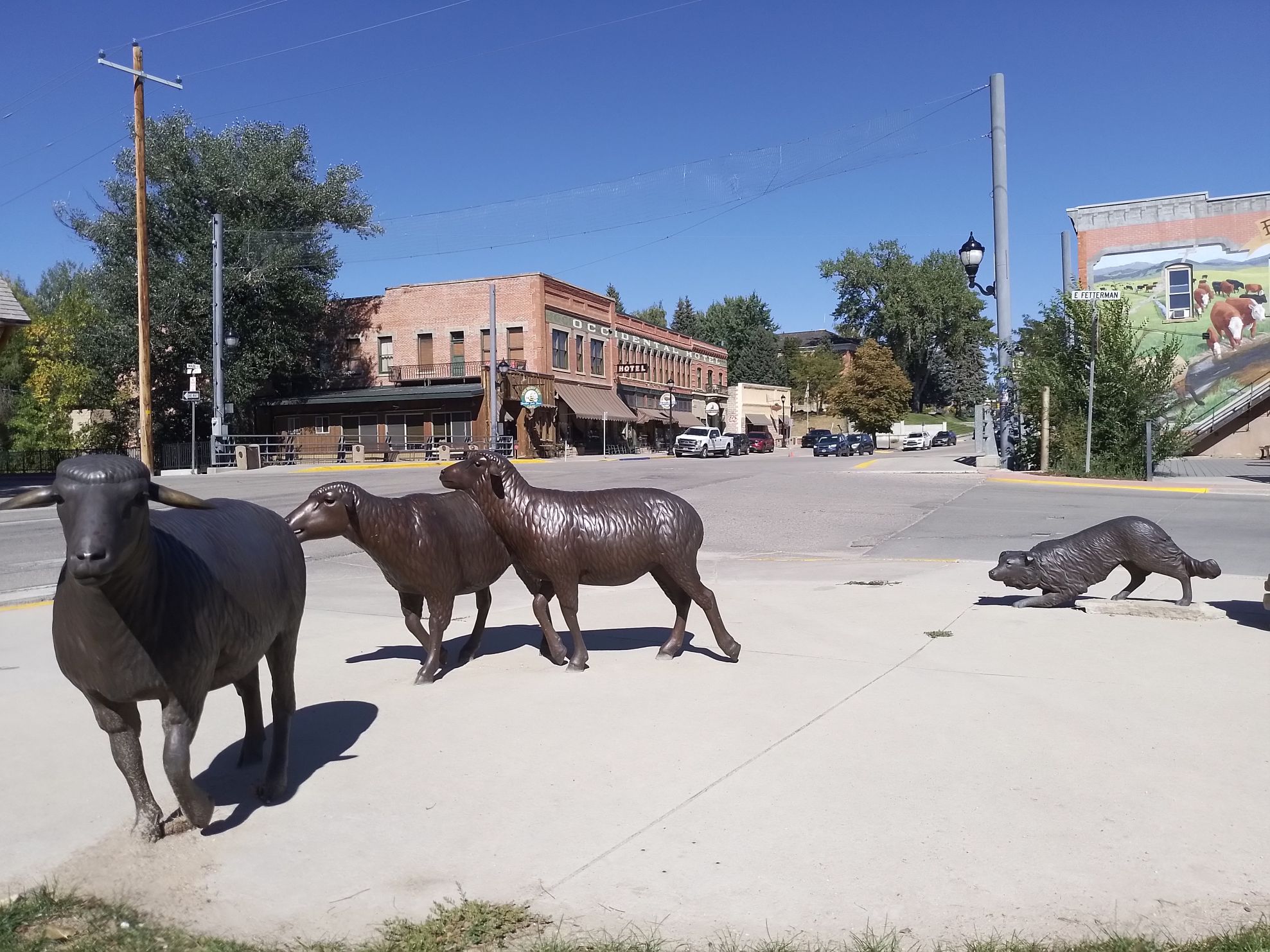 Downtown Buffalo. Photo / Mike Yardley
Downtown Buffalo. Photo / Mike Yardley
David and Jackie Stewart now own and operate the hotel, after helping restore it to its original grandeur, over the past 20 years. Even the bullet holes that you will see in the saloon are original. Today the hotel proudly displays its original wall coverings, woodwork, tin ceilings, Charles Rennie Macintosh–designed bar imported from Glasgow, and much of its original furniture (which had been stored in the attic). It’s a true gem.
Just across the Wyoming border, you’ll want to make tracks for Deadwood, South Dakota. This was the site of the last major gold rush in the continental United States. The discovery of gold in 1875 led to the feverish founding of Deadwood, endowing the Wild West frontier town with enormous wealth and notoriety. The settlement was named Deadwood because of all the dead trees that littered the area when the first pioneers struck gold.
Initially Deadwood was a dusty, one-street rough-and-tumble affair, flanked with ramshackle tin and timber shacks, spilling forth with saloons, gambling halls and brothels. Routinely trashed by floods, fire and boozy brawls, sturdier buildings were steadily developed. Sixty years ago, Deadwood became the only city in the United States to be named a National Historic Landmark. The whole town! It’s ebullient Main Street teems with picturesque Gold Rush-era stone and brick buildings, like a living, breathing, heaving museum. Yes, it’s an unabashed tourist trap, but strolling and exploring Main Street is irresistible, steeped in the rollicking spirit of the West.
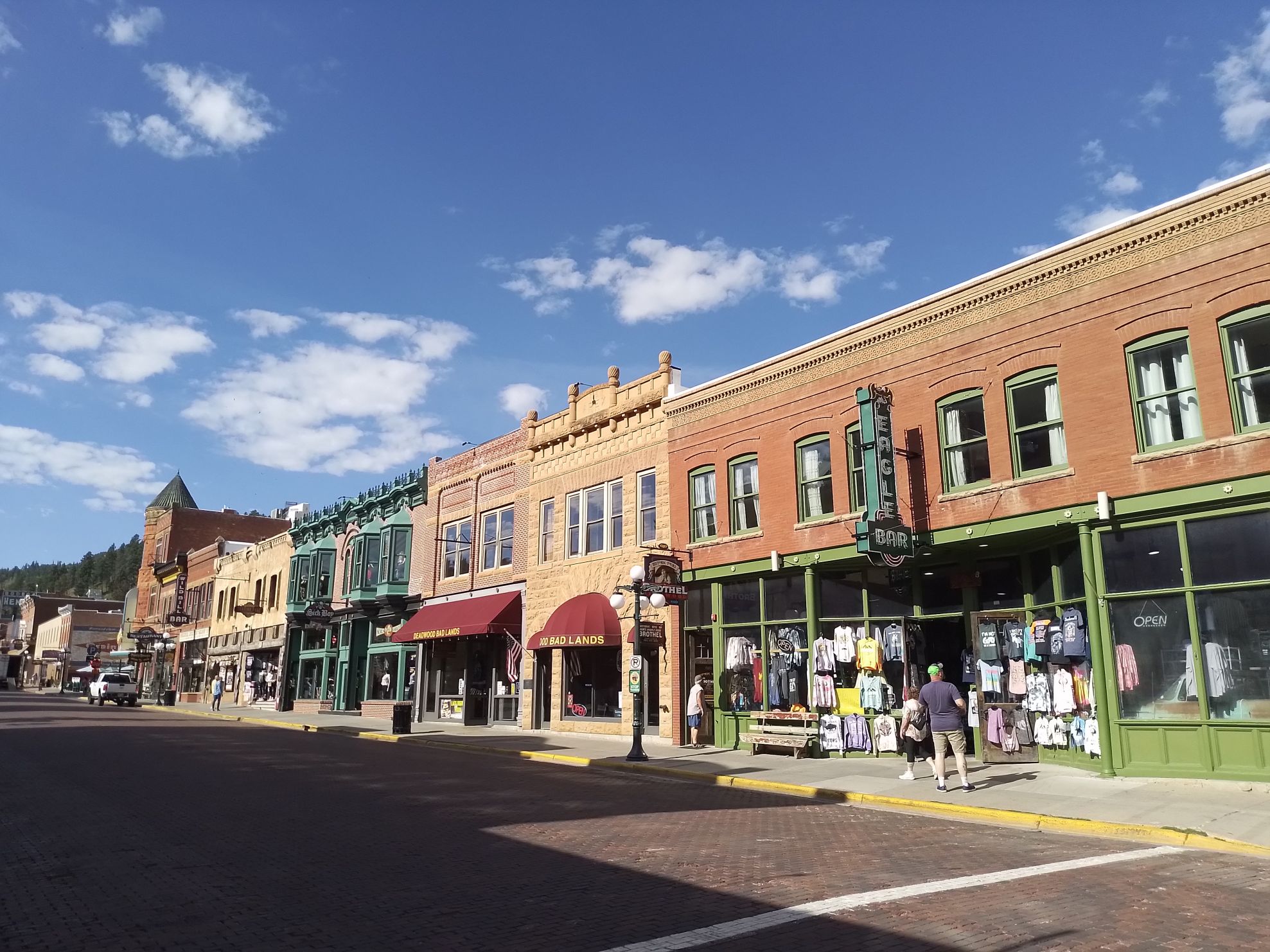 Main Street, Deadwood. Photo / Mike Yardley
Main Street, Deadwood. Photo / Mike Yardley
Deadwood has always been a town on the edge of the law. After more than a century of gambling on the down-low, in 1989 Deadwood became the third place in the USA (after Atlantic City and Nevada) to allow legal gaming. The new tax revenue boom turbo-charged the ambitious historic preservation project, safeguarding the irrepressible streetscape and revitalising the trove of buildings.
Admittedly, legalising gambling is a double-edged sword, because you’ll struggle to walk ten paces in Deadwood without sighting slot machines blinking at you. The place swarms with poker tables, slots and roulette wheels, like a miniature Las Vegas. But you can dodge the casinos and gaming halls and bar hop your way through heritage-heavy saloons, including the Iron Horse Inn, the Bullock Hotel and Saloon No. 10/Wild Bill Bar. This is where one of the Old West’s folk heroes, Wild Bill Hickok was gunned down. Fling open the pistol-shaped door handles, and you'll find an establishment with old Deadwood photographs and animal heads decorating the wood-panelled walls, and bar tenders pouring beers and bourbons.
The former gunfighter and lawman, Wild Bill, was playing poker in the bar when Jack McCall walked in and shot him in the back of the head. At the time, Bill was clutching a two pair of black aces and black eights, which has become immortalised in poker parlance as Dead Man’s Hand. Across the warmer months, Outlaw Square stages a feast of live music and daily shootouts, including the Trial of Jack McCall, who was duly executed and buried with the noose still around his neck.
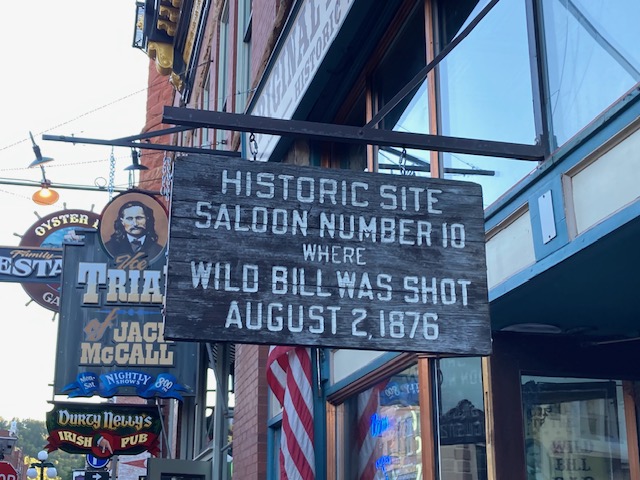
Photo / Mike Yardley
Calamity Jane, another legendary character of the Wild West, is buried next to Wild Bill, just out of town at Mount Moriah cemetery. She was a tobacco-spitting, beer-guzzling, foul-mouthed woman who preferred to dress in men’s clothing and was besotted by Wild Bill, but could never win his affections. At Mount Moriah, you can also see the grave of Seth Bullock, the town’s first sheriff who opened his hotel in 1895. The cemetery is quite the pilgrim site. When I visited Wild Bill's grave, crowned with a bronze head bust, it was brimming with freshly-laid flowers, bullets, bottles of Jack Daniels and playing cards. While in Deadwood, check out the extraordinary chainsaw-art that is crafted out of wood, including epic statues of Bigfoot.
While you’re in the neighbourhood, take the short drive to one of the USA’s most iconic natural landmarks – Devil’s Tower. This striking flat-topped rock tower, formerly called a butte, was the first natural formation in the United States to be declared a national monument in 1906. Part of the Black Hills mountain range, the monolith was formed from cooled magma exposed through erosion and stands at 1500 metres above sea level. Devil’s Tower is stunning sight rising from the forested hills and it’s synonymous with Close Encounters of the Third Kind. The Tower features heavily in Steven Spielberg’s 1977 flick, the contact point with the extra-terrestrial mothership. Needless to say, I didn’t spot any UFOs, but the thrusting tower stack is an awe-inspiring sight. Take a wander on the Tower Trail that leads you around the base of the monument. The site is sacred to the Lakota people and many other Plains Tribes and you’ll notice numerous prayer cloths attached to the trees.
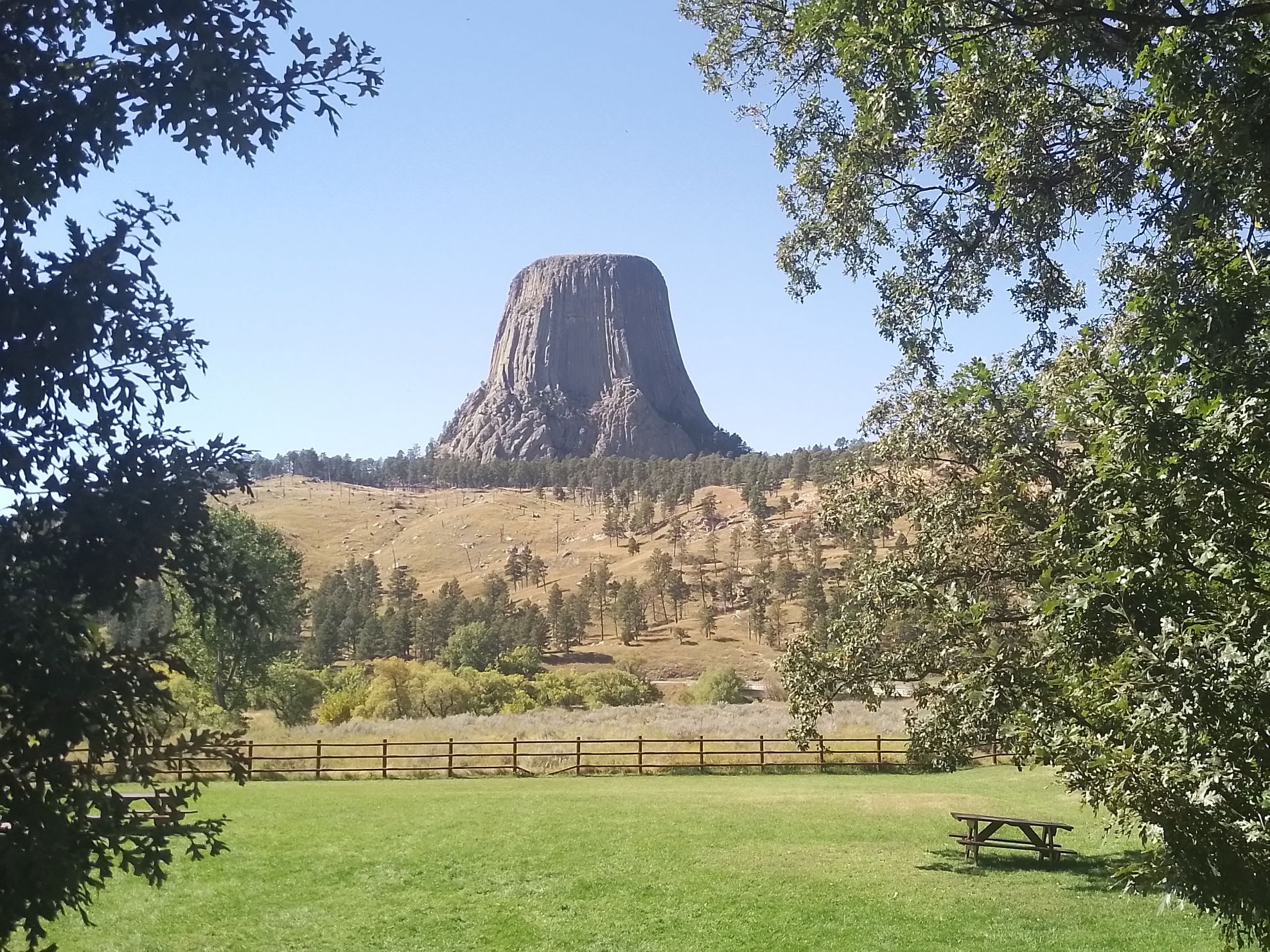 Photo / Mike Yardley
Photo / Mike Yardley
Where to stay in Deadwood? Escape the crowds, if not the slots, and check-in to The Lodge at Deadwood, perched above the town on the Black Hills. If you’re travelling with kids, they will love the indoor water park. Accommodations are generously sized with all of creature comforts, while Oggie’s Sports Bar and Deadwood Grills offer excellent on-site dining. www.greatamericanwest.co.nz
Mike Yardley is our resident traveller on Jack Tame Saturday Mornings.
Take your Radio, Podcasts and Music with you









